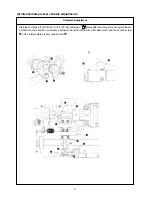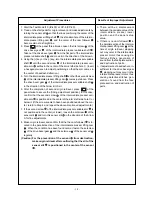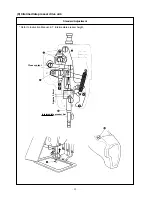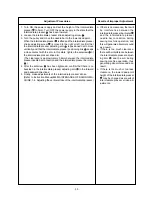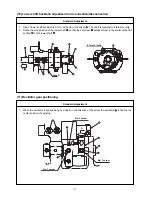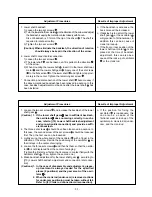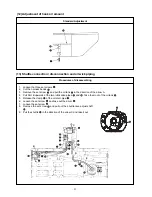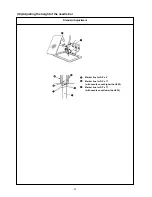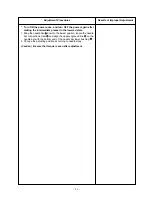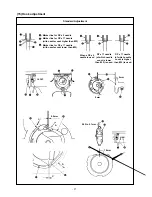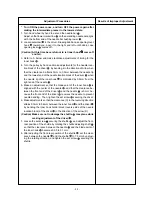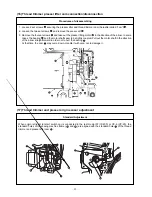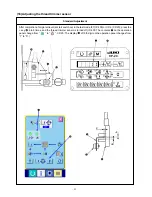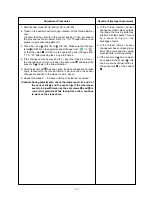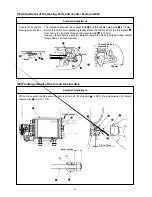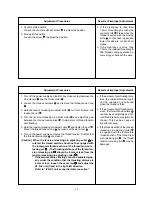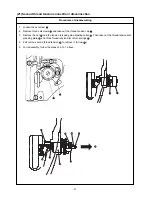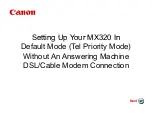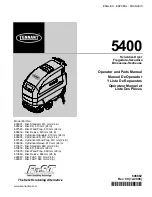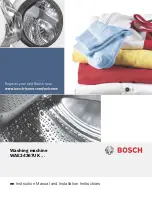
1. Turn ON the power supply and set the height of the intermediate
presser
to 0mm. Turn OFF the power supply in the state that the
intermediate presser
has been lowered.
2. Loosen the intermediate presser stroke adjusting screw
.
3. Turn the pulley and move the needle bar to the lower dead point.
When the intermediate presser
is lifted and the intermediate presser
stroke adjusting screw
is moved to the right or left, confirm that
the intermediate presser adjusting arm
is positioned not to move
vertically and that the intermediate presser positioning link
keeps
a close contact with the arm. In this state, tighten the setscrew
of
the intermediate presser drive arm.
(The clearance is approximately 3.6mm between the intermediate
presser needle bar connection and the intermediate presser bar metal
.)
4. After the setscrew
has been tightened, confirm that there is no
backlash in the intermediate presser adjusting arm
in the forward
and backward directions.
5. Finally, make adjustments of the intermediate presser stroke.
(Refer to Instruction Manual
III
. MAINTENANCE OF SAWING MA-
CHINE, 1-4. Adjusting the vertical stroke of the intermediate presser.)
o If there is no clearance, there will
be interference between the
intermediate presser bar metal
and the intermediate presser
needle bar connection during
sewing machine operation, and
this will generate abnormal sound
as a result.
o If there is too much clearance,
there will be interference between
the intermediate presser adjust-
ing arm
and the arm during
sewing machine operation, thus
generating abnormal sound as a
result.
o If there is too much or too less
clearance, the lower dead-point
height of the intermediate presser
may be changed as a result of
intermediate presser stroke ad-
justments.
– 20 –
Adjustment Procedures
Results of Improper Adjustment












